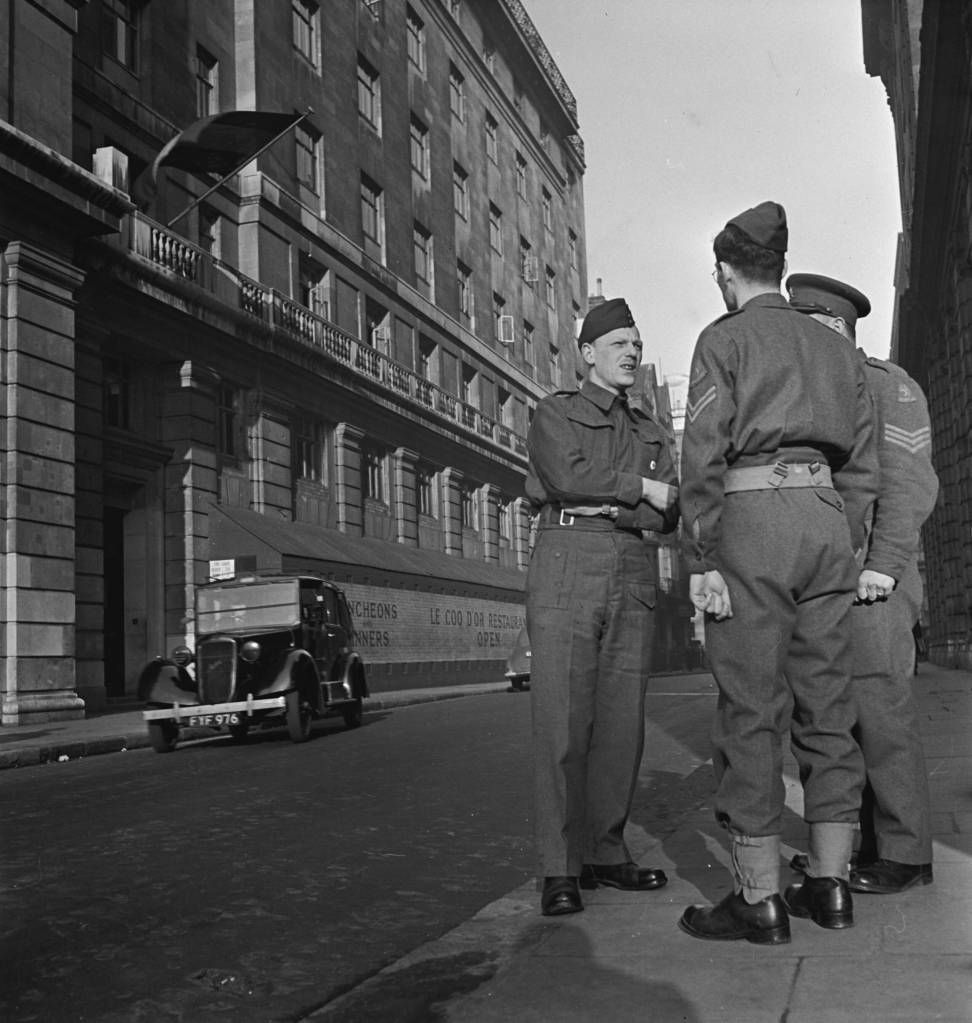Jorrit Steehouder explores the historical roots of European security by looking at wartime London. He draws historical lines between the London exiles and today’s European Union member states.

Jorrit Steehouder
Jorrit Steehouder is a historian on European Integration at Utrecht University. His research focuses on European integration, the history of diplomacy, Europe’s social-economic history, and European governments-in-exile.
When Russia invaded Ukraine in February 2022, the theme of ‘European security’ and adjacent political and military cooperation were forcefully propelled back to the centre of European policy-arenas – both at the European institutions in Brussels and member state capitals. At present, new practices of informal and more institutionalized security cooperation emerge. For example, the European ‘tank coalition’ that supplies Ukraine with heavy armour, or the revived (and expanded) framework of European Political Community (EPC) initiated by French President Emmanuel Macron.
The geopolitical and military nature of these emerging platforms for security cooperation fundamentally upsets the predominantly economic basis of European integration, which gained traction only after the Second World War. Yet, the historical roots of European integration show that these tensions between the geopolitical and economic dimensions of European integration are not all that new. They have existed all along. Ideas about European security and cooperation differed widely, most notably between Western, Central- and Eastern Europe. To capture these tensions and different visions, we must revisit London during the Second World War.

Source: Nederlandse militairen in Stratton Street, Londen, Het Nationaal Archief
London as a ‘miniature Europe’
When war broke out in Europe after the German (and Russian) invasion of Poland in 1939, and after it had spread to the rest of the European continent, the city of London emerged as the natural go-to for European refugees. By late 1941, the Netherlands, Belgium, Luxembourg, Norway, Poland, Czechoslovakia, Greece, and Yugoslavia had all established governments-in-exile, alongside Charles de Gaulle’s France libre. These exiles turned the British capital into a ‘miniature Europe’, as the British press described it. The exiles resided and conferenced in glamorous hotels such as the Ritz, the Savoy, and The Dorchester. Some of them shared office spaces, like the Dutch and Polish governments at Stratton House. Life in exile created an extraordinary proximity between European elites and policymakers. The context of war and exile also gave birth to a slightly more institutionalized network of think tanks, information bulletins, and news outlets that served as hubs for intellectual exchange. An infrastructure, as it were, to discuss the ‘new Europe’ that would emerge after the war.
First efforts at a collective rethinking of European order were undertaken by the Polish government. Prime Minister Władysław Sikorski and Polish diplomat Joseph Retinger had been working with the Czechoslovak government of Edvard Beneš to establish a Polish-Czechoslovak federation after the war as early as 1939. When in London, they increasingly sought to expand this federation to include western counterparts. In late 1940 and early 1941 the Dutch and Belgian governments met for a series of lunches. Together they discussed the creation of regional economic groupings as a way of creating political bonds and fostering peace and security in post-war Europe. Their ideas were deeply rooted in the experiences of the interwar period and a desire to prevent a repetition of the social and political chaos caused by the Great Depression.
These early discussions marked an emerging rift between those from Central (or Eastern, as their counterparts referred to them) Europe and Western Europe. Retinger and Sikorski wanted to go beyond mere economics. Their ideas for Europe gravitated around federative arrangements that included political and military aspects. For Western European governments, Belgium, the Netherlands, and Norway in particular, this was a bridge too far. They considered non-economic forms of cooperation ‘pipe dreams’ and rejected a purely continental alliance. Rather, they looked towards the Atlantic, to the British and American governments, for leadership. As a result, the exiles in London conceived of multiple regional alliances: a Polish-Czechoslovak bloc, a Greek-Yugoslav bloc, and what would eventually become the Benelux.

Source: Czechoslovak troops in London, Public Domain
‘Eastern European quarrels’
In the meantime, the outlook on the post-war period for the Poles looked rather pale. The Russians joined the wartime coalition against Hitler in June 1941 which put Poland in the strange position that they found themselves fighting alongside their former enemies. This added urgency to their efforts of bringing about post-war European federations. Retinger and Sikorski initiated a ‘conference’ of the eight exiled governments in London to bring about a declaration of solidarity. Sikorski anticipated a solidarity of a ‘military nature’ and hoped that the exiled Europeans would pledge to mutually safeguard each other’s ‘national independence’ for a period of ten to fifteen years. The implications of this went far beyond signing treaties or security pacts – as had been common practice in the 1930s – because the Polish ideas were infused with notions of a European federation.
Western European countries did not support Sikorski’s ideas, mostly because they did not want to become involved in ‘Eastern European quarrels’, and potential conflict with Russia. Clearly, by 1942 one can trace two different ideas on establishing peace and security after the war. Both were informed by a fundamentally different threat perception on how Russia would behave after the war, and both gave rise to two different ideas of European cooperation and integration. On the one hand there was the idea of all-European military and political solidarity after the war, designed to curb Soviet imperialism and protect countries like Poland. On the other hand, there was the ‘western’ notion of international monetary and economic cooperation to prevent the social and political destabilizations of the 1930s. Ironically, this second, ‘western’ notion of economic cooperation, would gain traction through the efforts of Retinger and Sikorski to bring Europeans together in London, most notably the aforementioned ‘Eight Power Conference’.
Already during the Second World War, Russia made impossible the formation of political alliances between East and West, or even the prospect of economic cooperation. Economic cooperation and integration between the nations of Western Europe, on the other hand, was far more acceptable and gained traction almost immediately after the war. In 1948, one could see these tendencies solidify in the division of Europe and the emergence of economic cooperation between western European countries under the Marshall Plan and in the Organisation for European Economic Cooperation (OEEC).

Source: Sikorski–Mayski agreement between Poland and the USSR, Public Domain
The legacy of the London-exile
What lessons can we learn from this? The project of western European integration started off based on the idea that social and political stability could be achieved through monetary and economic cooperation, and that this would bring peace and security. Over the decades that followed, this notion has defined European integration. Whereas economic integration has always proceeded, with the creation of a common market and common currency as the crowning achievements, political and military integration never reached its full potential.
When Russia invaded Ukraine in 2022 it became painfully clear that the different ideas of security informing the ideas of European cooperation in London during the Second World War, are still at the heart of the European integration project. Even though countries like Poland and Czech Republic have become part of the EU, their different threat perception of Russia has never been internalized by the EU, which in its core remained the western European project it set out to be after 1945. One only needs to recall the warnings from the many countries in Central- and Eastern Europe to not build economic relations with Russia through Nord Stream and Nord Stream II.
The London legacy shows us how European cooperation and integration can be informed by very different motives and threat perceptions. They point towards different ideas of security: one in which ‘European cooperation’ was a means of achieving peace through social and economic stability, and one which had hoped to use it as a bulwark against Russian imperialism.
COVER IMAGE: Nederlandse militairen in Stratton Street, Londen, Het Nationaal Archief
Opinion pieces have been published by the Security History Network for the purpose of encouraging informed discussions and debates on topics surrounding security history. The views expressed by authors do not necessarily represent the views of the SHN, its partners, convenors or members.

